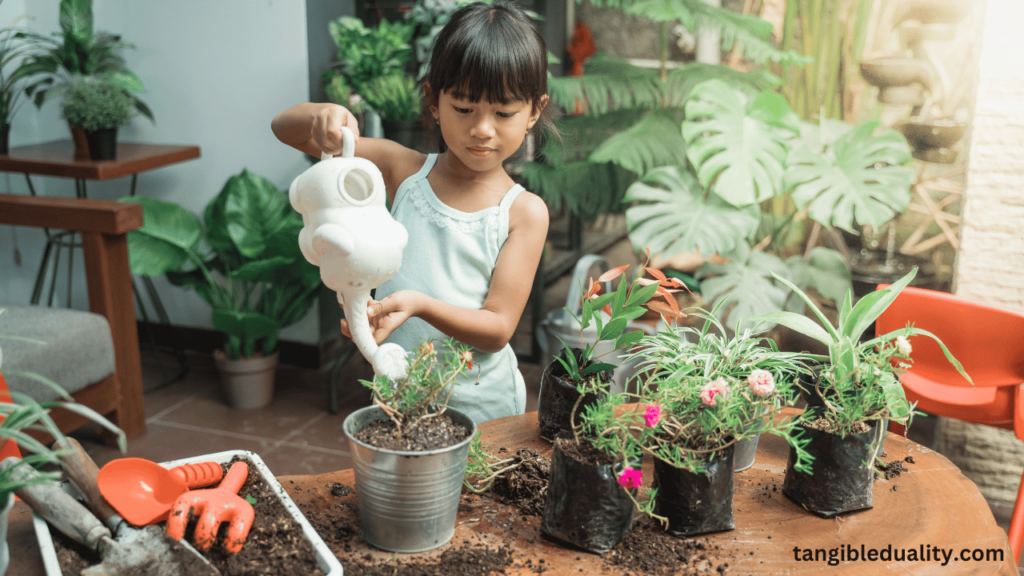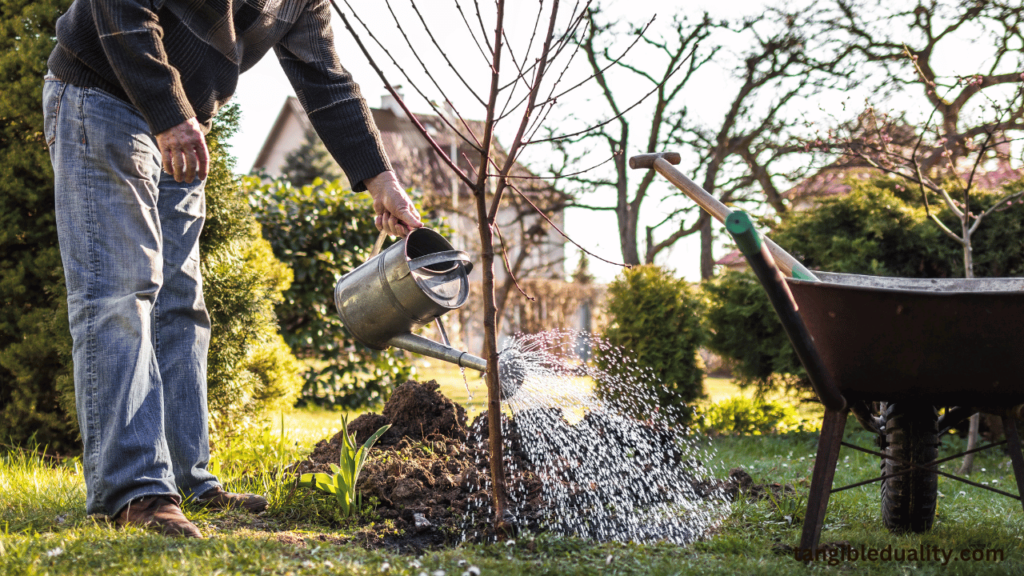Indoor plants are a popular choice for home decor because they can bring a sense of vitality and greenery into any space. Nevertheless, ensuring that indoor plants receive the appropriate amount of water is one of the most challenging problems associated with caring for them.
Too much water can cause root rot, whereas too little water can cause wilting and dryness. Self-watering devices for houseplants are beneficial in situations like these. Using self-watering systems for houseplants is a practical and effective method of ensuring that your plants receive the appropriate amount of water at all times.
It is customary for these systems to consist of a reservoir of water that gradually releases moisture into the soil. This ensures that the soil remains constantly moist without the risk of overwatering. It is even possible to find self-watering systems with indicators that will alert you when the reservoir needs to be refilled.
This article discusses the advantages of using self-watering systems for houseplants, their operation, and the various types currently available on the market. Whether you have a green thumb or have trouble keeping your plants alive, self-watering systems can make the process of caring for plants simpler and more reliable.
When you have lush, flourishing indoor flora, you can say goodbye to the guesswork in determining when to water your plants.

How to Efficiently Water Indoor Plants
Benefits of Self-Watering Systems
Watering your indoor plants efficiently is essential for their growth and health. Using a self-watering system can provide several benefits, such as maintaining the right moisture levels in the soil and preventing overwatering or underwatering.
Choosing the Right Watering System for Your Houseplants
When selecting a watering system for your houseplants, consider factors like plant species, pot size, and watering habits. Self-watering systems, drip irrigation, or simple pot transcripts can effectively water your plants.
Tips for Properly Watering Indoor Plants
To ensure proper hydration for your indoor plants, monitor the water level in the pots and adjust the amount of water accordingly. Avoid excess water, which can lead to drainage issues, and use methods like drip systems to water your houseplants while away.
Common Issues with Plant Watering Systems
Troubleshooting Self-Watering Systems
While self-watering systems are convenient, they can sometimes face issues like clogging or malfunctioning. Troubleshoot these problems by checking the tubing, ensuring proper drainage, and adjusting the water flow.
Ensuring Proper Drainage in Potted Plants
Proper drainage is crucial for potted plants to prevent waterlogging and root rot. Use pots with drainage holes, add a layer of gravel at the bottom, and avoid overwatering to optimize the drainage in your indoor plant containers.
Optimizing Drip Irrigation for Indoor Plants
Drip irrigation is an efficient way to water your houseplants by delivering water directly to the roots. To optimize your drip irrigation system, adjust the water flow, ensure even distribution, and use timers for consistent watering schedules.

DIY Self-Watering Systems for Houseplants
Creating a Basic Irrigation System for Your Indoor Plants
You can create a simple DIY irrigation system for your indoor plants using plastic bottles, tubing, and a water reservoir. This system allows plants to absorb water as needed, keeping them hydrated even when you’re away.
Using Tubing for Efficient Plant Watering
Tubing can be a versatile tool for efficient plant watering, especially in larger indoor plant setups. Connect the tubing to a water source and position the drippers close to the plant roots for adequate water supply without wetting the plant’s foliage.
Designing a Custom Drip Irrigation Setup
Customize your drip irrigation setup based on the specific needs of your houseplants. Use adjustable drippers, different tubing lengths, and a timer to create a tailor-made irrigation system that delivers the right amount of water to each plant.
Best Practices for Indoor Plant Watering
Understanding the Water Needs of Different Indoor Plants
Different indoor plants have varying water requirements based on their species and growth conditions. Research the specific water needs of your plants to provide adequate hydration and prevent issues like overwatering or dehydration.
Utilizing Pot Transcripts for Effective Watering
Pot transcripts are handy tools for gauging soil moisture and adjusting your watering routine accordingly. Place the transcripts in the plant pots and monitor the color changes to determine when to water your houseplants.
Ensuring Consistent Water Supply for Your Houseplants
Consistency is vital when watering your indoor plants to promote healthy growth. Implement a watering schedule based on plant type, season, and humidity levels to ensure a steady water supply that meets your plants’ needs.
Ensuring Proper Hydration for Your Houseplants
Monitoring Water Levels in Self-Watering Systems
Regularly check the water levels in self-watering systems to ensure the reservoir is adequately filled. Adjust the water supply based on the plant’s needs and refill the reservoir to keep your plants hydrated.
Importance of Regularly Watering Your Plants
Consistent watering is essential for maintaining the health and vitality of your houseplants. Check the soil moisture regularly and water your plants as needed to prevent wilting, yellowing leaves, or stunted growth due to inadequate hydration.
Implementing Watering Schedules for Indoor Plants
Develop a watering schedule for your indoor plants based on the plant’s water requirements, environmental conditions, and potting mix. Adjust the frequency and amount of water based on seasonal changes and the specific needs of each plant.
Conclusion
DIY self-watering systems offer a convenient and effective solution for indoor plant care. By implementing these systems, plant enthusiasts can ensure their houseplants receive consistent moisture levels without the hassle of frequent watering.
Whether using simple wicking methods or more sophisticated setups, such as reservoir systems or self-watering pots, these solutions can help maintain optimal hydration for plants while reducing the risk of over or under-watering.
Embracing these effortless watering techniques promotes healthier, thriving houseplants and simplifies the indoor gardening experience, allowing enthusiasts to enjoy the beauty of their greenery with peace of mind.
FAQs
Self-Watering Systems for Houseplants FAQ
- Q: What are self-watering systems for houseplants?
- A: Self-watering systems for houseplants are DIY setups that allow you to water your plants without the need for constant monitoring. These systems ensure that the plants receive the right amount of water at the right time.
- Q: How do self-watering systems work for indoor plants?
- A: Self-watering systems typically involve a reservoir of water connected to the plant’s soil through a wicking mechanism. This allows the plant to absorb water as needed, ensuring consistent and efficient watering.
- Q: Can self-watering systems help in watering plants while away on vacation?
- A: Yes, self-watering systems are ideal for watering plants while you’re away on vacation. They provide a reliable way to ensure that your plants receive water even when you’re not around to do it manually.
- Q: How much water should I put in a self-watering system for houseplants?
- A: The amount of water to put in a self-watering system depends on factors like the plant’s size, type, and environment. It’s important to ensure that the water level is sufficient to keep the plant’s soil moist but not waterlogged.
- Q: Do self-watering systems work by watering the plants from the top?
- A: Self-watering systems work by allowing the plants to absorb water from the bottom up through the soil. This method mimics natural watering processes and helps prevent issues like overwatering or water runoff.
- Q: How do I ensure that the water in the self-watering system isn’t stagnant?
- A: To ensure that the water in the self-watering system remains fresh and oxygenated, you can periodically empty and refill the reservoir with fresh water. This helps prevent stagnation and ensures the health of your plants.
- Q: What are the benefits of using self-watering systems for indoor plants?
- A: Using self-watering systems for indoor plants offers benefits such as consistent watering, reduced risk of over or under-watering, and the ability to take care of your plants more efficiently, especially for busy individuals or frequent travelers.
- Q: How can I create a DIY self-watering system for my houseplants?
- A: To create a DIY self-watering system for your houseplants, you’ll need to gather materials like a reservoir, wicking mechanism, and a container for your plant. There are various tutorials available online that can guide you through the process.

